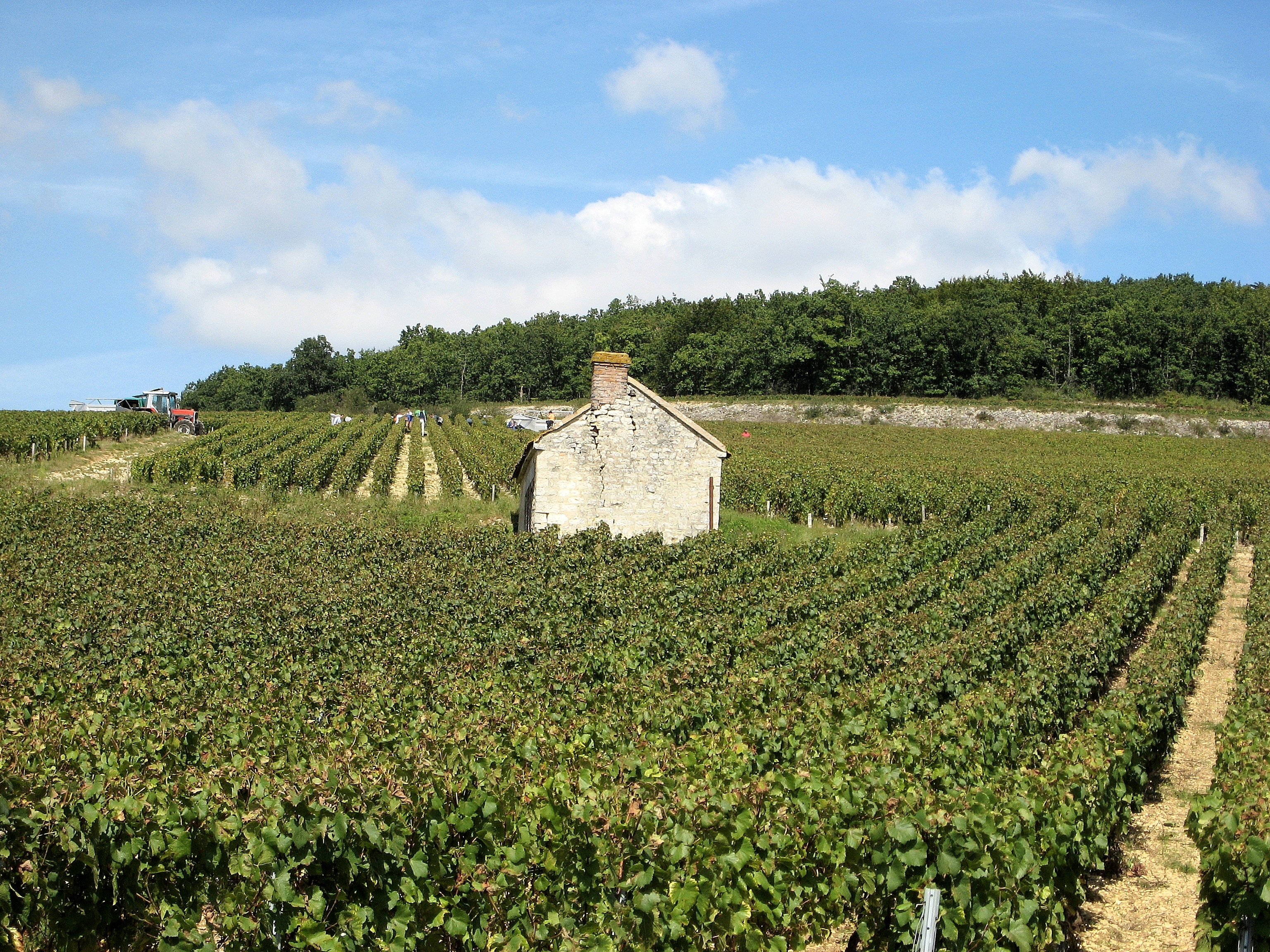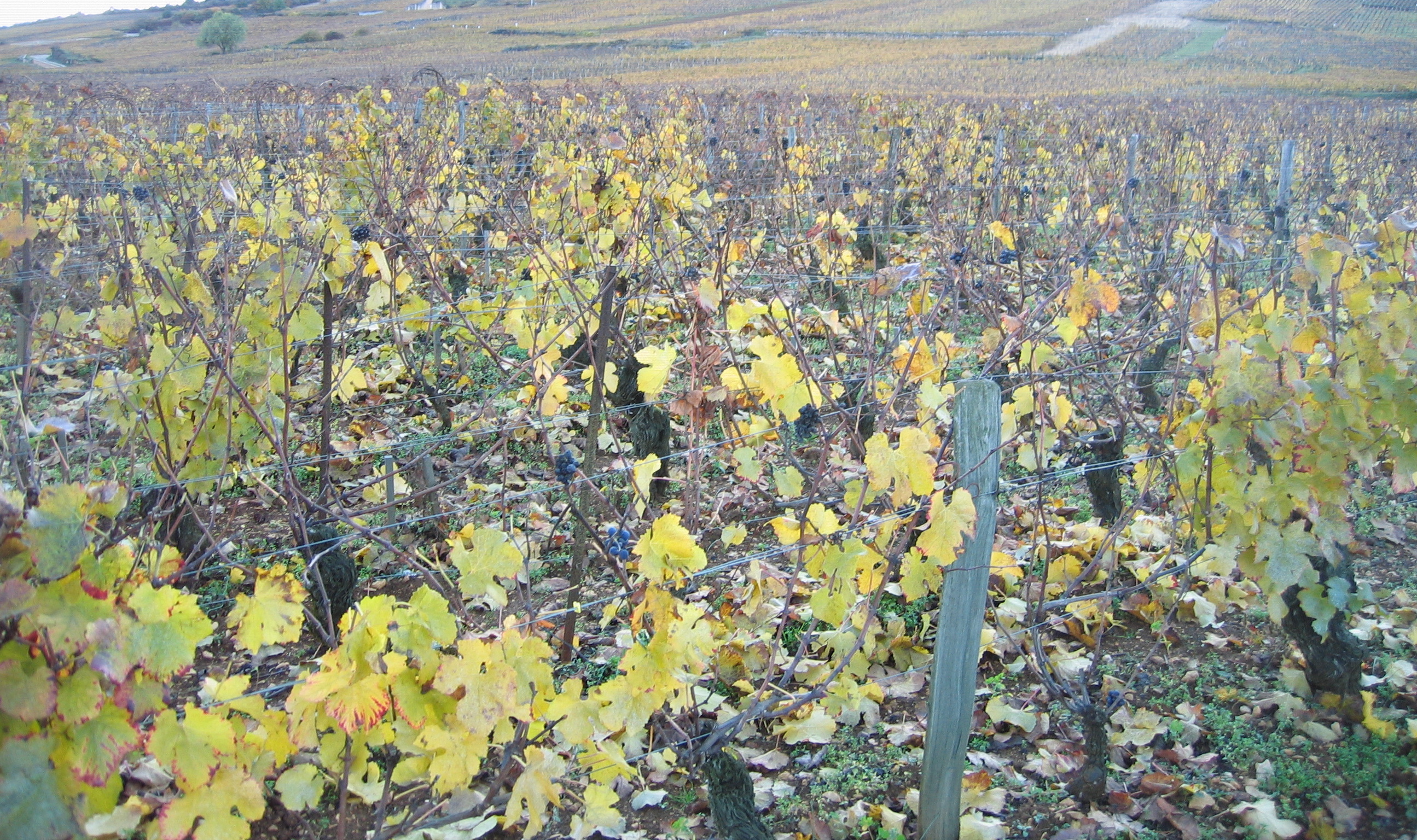|
Romanée-Saint-Vivant
Romanée-Saint-Vivant is an ''Appellation d'origine contrôlée'' (AOC) and Grand cru (wine), Grand Cru vineyard for red wine in the Côte de Nuits subregion of Burgundy wine, Burgundy, with Pinot noir as the main grape variety. It is situated within the commune of Vosne-Romanée. La Romanée borders on La Grande Rue in the south, Romanée-Conti and Richebourg AOC, Richebourg in the west, Vosne-Romanée Premier Cru vineyards in the north (Les Suchots) and in the east (La Croix-Rameau and Les Gaudichots) and also the village Vosne-Romanée itself in the east. The AOC was created in 1936. It takes its name from the Abbey of Saint Vivant, which in medieval times owned several vineyards among the Vosne-Romanée Grands Crus. History There are several different vineyard owners in Romanée-Saint-Vivant today, although Domaine de la Romanée-Conti is the largest. The entire vineyard of Romanée Saint-Vivant was bought in 1791 by Nicolas-Joseph Marey, son-in-law of the geometer Gaspard Mong ... [...More Info...] [...Related Items...] OR: [Wikipedia] [Google] [Baidu] |
La Grande Rue
La Grande Rue () is an ''Appellation d'origine contrôlée'' (AOC) and Grand Cru vineyard for red wine in the Côte de Nuits subregion of Burgundy, with Pinot Noir as the main grape variety. Wine style In general its character is feminine rather than powerful. It has some of the character of the neighboring La Tâche, but is more delicate. "The overall style is fruity with fresh, red fruit aromas and gentle tannins ...Young it shows a promising note of ''petits fruits rouges'' and hints of blackcurrant. These positive, complex aromas overlay a wine of dimension and substance, with length and finesse; a complete wine without being in any way heavy." It can contain "nuances of raspberry and violet",with a bouquet of "a profusion of flowers" "It gains from being decanted and often delivers wild game aromas ... Age embellishes it" Geography, cultivation, winemaking, and production It is situated within the commune of Vosne-Romanée and is a monopole of Domaine Lamarche. I ... [...More Info...] [...Related Items...] OR: [Wikipedia] [Google] [Baidu] |
Domaine De La Romanée-Conti
Domaine de la Romanée-Conti, often abbreviated to DRC, is an estate in Burgundy, France that produces white and red wine. It is widely considered among the world's greatest wine producers, and DRC bottles are among the world's most expensive. It takes its name from the domaine's most famous vineyard, Romanée-Conti. History In 1232, the Abbey of Saint Vivant in Vosne acquired 1.8 hectares of vineyard. In 1631 it was bought by the de Croonembourg family, who renamed it Romanée for reasons unknown. At the same time they acquired the adjacent vineyard of La Tâche. In 1760, André de Croonembourg decided to sell the domaine and it became the subject of a bidding war between Madame de Pompadour, mistress of Louis XV of France, and her bitter enemy Louis François, Prince of Conti. The prince won, paying the massive sum of 8000 livres, and the vineyard became known as Romanée-Conti. But come the Revolution, the prince's land was seized and auctioned off. The Romanée-Conti vin ... [...More Info...] [...Related Items...] OR: [Wikipedia] [Google] [Baidu] |
Vosne-Romanée
Vosne-Romanée () is a commune in the Côte-d'Or department in Bourgogne-Franche-Comté in eastern France. Population Wine It produces the region's most celebrated wines, all made entirely from the Pinot noir grape: "There can be little doubt that in the firmament of the Côte de nuits, Vosne-Romanée is the brightest star"The Great Domaines of Burgundy by Remington Norman & Charles Taylor, Kyle Cathie, 2010, p.68 Despite the monopoly control of four of the six grand crus, the village has at least forty growers sharing its vineyards. The wines produced from the vineyards are diverse, but they are generally considered to be rich, silky and well balanced, with a complexity which surpasses that of the other wines of Burgundy. In addition to many excellent wines at both the village and premier cru level, the village has six grand crus. ''Romanée-Conti'' The ''Romanée-Conti'' vineyard dominates the village, with its wines among the most expensive in the world. It is a ... [...More Info...] [...Related Items...] OR: [Wikipedia] [Google] [Baidu] |
List Of Burgundy Grand Crus
Grand cru (wine), Grand Cru (great growth) is the highest level in the vineyard classification of Burgundy wine, Burgundy. There are a total of of Grand Cru vineyards—approximately 2% of Burgundy's of vineyards (excluding Beaujolais wine, Beaujolais)—of which produce red wine and produce white wine. In 2010, 18,670 hectoliters of Burgundy Grand Cru wine was produced, corresponding to 2.5 million bottles, or just over 1.3% of the total wine production of Burgundy. , accessed on May 5, 2012 The origin of Burgundy's Grand crus can be traced to the work of the Cistercians who, from amongst their vast land holdings in the region, were able to delineate and isolate plots of land that produced wine of di ... [...More Info...] [...Related Items...] OR: [Wikipedia] [Google] [Baidu] |
Burgundy Wine
Burgundy wine ( or ') is made in the Burgundy region of eastern France, in the valleys and slopes west of the Saône, a tributary of the Rhône. The most famous wines produced here, and those commonly referred to as "Burgundies", are dry (wine), dry red wines made from pinot noir grapes and white wines made from chardonnay grapes. Red and white wines are also made from other grape varieties, such as gamay and aligoté, respectively. Small amounts of rosé and sparkling wines are also produced in the region. Chardonnay-dominated Chablis (wine), Chablis and gamay-dominated Beaujolais wine, Beaujolais are recognised as part of the Burgundy wine region, but wines from those subregions are usually referred to by their own names rather than as "Burgundy wines". Burgundy has a higher number of ' (AOCs) than any other French region, and is often seen as the most '-conscious of the French wine regions. The various Burgundy AOCs are classification of wine, classified from carefully deline ... [...More Info...] [...Related Items...] OR: [Wikipedia] [Google] [Baidu] |
Romanée-Conti
Romanée-Conti is an ''Appellation d'origine contrôlée'' (AOC) and Grand cru (wine), Grand Cru vineyard for red wine in the Côte de Nuits subregion of Burgundy wine, Burgundy, France, with Pinot Noir as the primary grape variety. It is situated within the communes of France, commune of Vosne-Romanée and is a monopole (wine), monopole of the winery Société Civile du Domaine de la Romanée-Conti, which takes its name after this vineyard. Romanée-Conti borders on La Romanée in the west, Richebourg (wine), Richebourg in the north, Romanée-Saint-Vivant in the east and La Grande Rue in the south.BIVB fiche , accessed on December 2, 2009. The AOC was created in 1936. Wine from the vineyard is among the most sought after, and expensive, in the world. In October ... [...More Info...] [...Related Items...] OR: [Wikipedia] [Google] [Baidu] |
Richebourg AOC
Richebourg is an ''Appellation d'origine contrôlée'' (AOC) and Grand cru (wine), Grand Cru vineyard for red wine in the Côte de Nuits subregion of Burgundy wine, Burgundy, with Pinot noir as the main grape variety. K. MacNeil ''The Wine Bible'' pg 191-195 Workman Publishing 2001 It is situated within the commune of Vosne-Romanée, and borders La Romanée and Romanée-Conti in the south, Romanée-Saint-Vivant in the east and Vosne-Romanée Premier Cru vineyards in the north and west. The AOC was created in 1936. Production In 2008, of vineyard surface was in production within the AOC, and 198 hectoliter of wine was produced, corresponding to a little over 26,000 bottles. This wine is mentioned in the film Sideways. Characteristics "Richebourg has more opulence than finesse ... Richebourg is the more massive and Le Romanée-Conti finer" AOC regulations The main grape variety for Richebourg is Pinot noir. The AOC regulations also allow up to 15 per cent total of Chardonnay, ... [...More Info...] [...Related Items...] OR: [Wikipedia] [Google] [Baidu] |
Abbey Of Saint Vivant
An abbey is a type of monastery used by members of a religious order under the governance of an abbot or abbess. Abbeys provide a complex of buildings and land for religious activities, work, and housing of Christian monks and nuns. The concept of the abbey has developed over many centuries from the early monastic ways of religious men and women where they would live isolated from the lay community about them. Religious life in an abbey may be monastic. An abbey may be the home of an enclosed religious order or may be open to visitors. The layout of the church and associated buildings of an abbey often follows a set plan determined by the founding religious order. Abbeys are often self-sufficient while using any abundance of produce or skill to provide care to the poor and needy, refuge to the persecuted, or education to the young. Some abbeys offer accommodation to people who are seeking spiritual retreat. There are many famous abbeys across the Mediterranean Basin and Eur ... [...More Info...] [...Related Items...] OR: [Wikipedia] [Google] [Baidu] |
Lieu-dit
''Lieu-dit'' (; plural: ''lieux-dits'') (literally ''location-said'', "named place") is a French language, French toponymic term for a small geographical area bearing a traditional name. The name usually refers to some characteristic of the place, its former use, a past event, etc. A lieu-dit may be uninhabited, which distinguishes it from an ''hameau'' (Hamlet (place), hamlet), which is inhabited. In Burgundy, the term ''climat'' is used interchangeably with ''lieu-dit''. Etymology English speakers seem to have discovered the concept through oenology and have considered it as a Glossary of wine terms, wine term which in its typical usage translates as "vineyard name" or "named vineyard". Typically, a ''lieu-dit'' is the smallest piece of land which has a traditional vineyard name assigned to it. In most cases, this means that a ''lieu-dit'' is smaller than an ''appellation d'origine contrôlée'' (AOC). Use in France In some cases, ''lieux-dits'' appear on wine labels, in addi ... [...More Info...] [...Related Items...] OR: [Wikipedia] [Google] [Baidu] |
Potential Alcohol
Must weight is a measure of the amount of sugar in grape juice (must) and, hence, indicates the amount of alcohol that could be produced if it is all fermented to alcohol, rather than left as residual sugar. , accessed on March 26, 2009 Measurement is in degrees In France and many other countries, the grape must density is often recalculated to show potential alcohol, the percent alcohol content that would be the result if the must were fermented to a completely dry wine.Refractometer scales * (°Bx): Used in |






